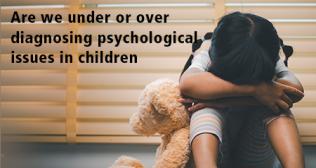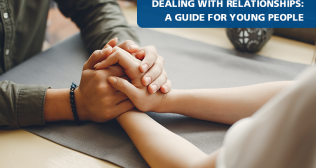
Prevention of Violence In Children

As we observe the alarming rate of growing prevalence of aggressive tendencies amongst the children and adolescents today, it gives us food for thought. Violence amongst the youth includes all manifestations of aggression, whether as a victim, a perpetrator or a witness. Common incidents of violence amongst the youth which are gaining prevalence in the recent past include behaviours like bullying, ragging, physical or sexual harassment, and self-harm behaviour.Violence amongst the youth threatens not only young people's well-being, but can also result in physical injuries, social and emotional difficulties, and academic problems, not just for the victim but for the violent perpetrators as well. Aggressive actions breed more such aggressive reactions, as this forms a vicious cycle. As the victim of the aggressive act feels threatened, he or she is likely to engage in a reactive aggression. This furthermore leads to an added perpetuation of increasing instances of violence between the perpetrators and the victims. Not to ignore the role of the bystanders, who often tend to witness such acts but rarely are willing to step in to stop the perpetrator, or even report such instances, avoiding further embroilment. This is a sad but harsh reality.
As the young minds of the children and adolescents tend to be very impressionable, the role of media and peer influences are very significant in promoting aggression amongst the youth. Time and again researchers have found that watching aggression increases aggressive behaviour in children and adolescents. Playing violent videogames desensitizes them towards violence and pain. Furthermore, the importance of demonstrating role-models for the youth needs to be reiterated. Children and adolescents are prone to ape and internalize the behaviours they see and observe around them. Therefore, media and peer influences need to be kept in mind while working towards the prevention of violence amongst the youth.
A holistic approach towards prevention of such violence amongst the youth needs to be targeted at various levels. Schools could promote awareness related to issues of violence amongst the children and adolescents, while developing anti-bullying and anti-violence rules and policies to be followed by the students, teachers, parents and all concerned authorities alike.
Incidents of violence can largely be prevented by teaching emotional awareness and management to children and adolescents, as they are allowed to explore their feelings, identify and label them appropriately, and look at alternative and less destructive means of expressing themselves. As we suppress our emotions, especially those of anger or frustration, these feelings tend to fester within us, thereby leading to an emotional outburst which then goes out of our control. Therefore, it is beneficial to encourage the youth to engage in activities like sports, dances, arts, theatre, writing, or other creative sources of venting their emotions regularly. Even appointing the youngsters with an added responsibility can often help them hold themselves more accountable for their behaviour.
Working at both ends of the continuum, efforts should be made to train the children and adolescents in looking at the other side of things as well. It is necessary for them to be able to understand the experiences from the other person’s point of view, in order to fully understand the extent of the impact of such violent behaviours. Parental participation is an integral part of successful prevention towards violence amongst the youth. They should be trained in employed practical strategies for deferring aggressive behaviour in the home settings, to bring an alignment with the policies being implemented by the school or colleges as well.
To address problems around teenage aggression, media literacy needs to become a priority for school aged children and adolescents. Parents and teachers alike need to be informed of these skills so as to be able to talk to the youth, use media messages as teaching moments and be able to dilute the harmful effects of the media. It is important to help the children and adolescents distinguish between aggression and assertion, and providing them training in their social and interpersonal skills shall help them foster healthier peer relationships as well, through social skills and assertiveness training.
Categories
Clear allMeet the doctor

- Mental Health and Behavioural Sciences | Mental Health and Behavioural Sciences | Psychiatry | Clinical Psychology
-
21 Years
-
900



















